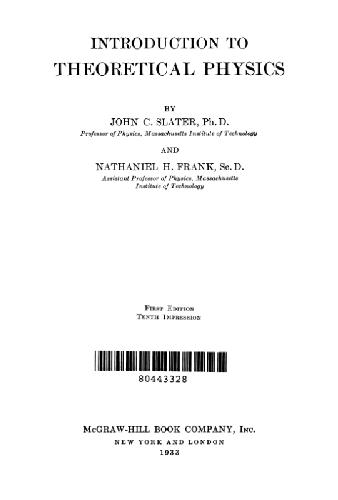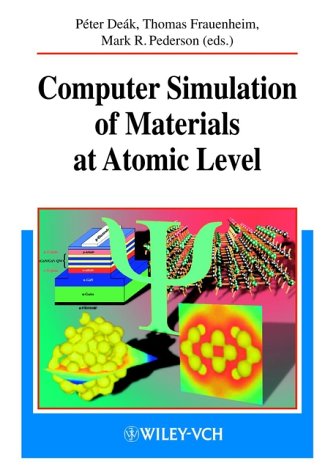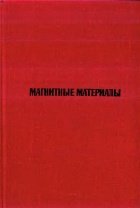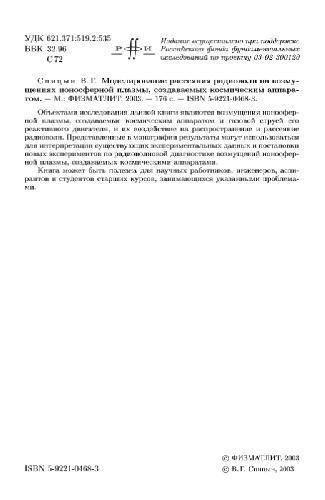Planck M.
Table of contents :
Preface
Power series
Power series method for differential equations
Power series and exponential methods for simple harmonic vibrations
Damped vibrations, forced vibrations, and resonance
Energy
Vector forces and potentials
Lagrange’s equations and planetary motion
Generalized momenta and Hamilton’s equations
Phase space and the general motion of particles
The motion of rigid bodies
Coupled systems and normal coordinates
The vibrating string and Fourier series
Normal coordinates and the vibrating string
The string with variable tension and density
The vibrating membrane
Stresses, strains, and vibrations of an elastic solid introduction
Flow of fluids introduction
Heat flow
Electrostatics, Green’s theorem, and potential theory
Magnetic fields, Stokes’s theorem, and vector potential
Electromagnetic induction and Maxwell’s equations
Energy in the electromagnetic field
Reflection and refraction of electromagnetic waves
Electron theory and dispersion
Spherical electromagnetic waves
Huygens’ principle and green’s theorem
fresnel and fraunhofer diffraction
waves, rays, and wave mechanics
Schrodingers equation in one dimension
The correspondence principle and statistical mechanics
Matrices
Perturbation theory
The hydrogen atom and the central field
Atomic structure
Interatomic forces and molecular structure
Equation of state of gases
Nuclear vibrations in molecules and solids introduction
Collisions and chemical reactions
Electronic interactions
Electronic energy of atoms and molecules
Fermi statistics and metallic structure
Dispersion, dielectrics, and magnetism
Suggested references
Index







Reviews
There are no reviews yet.